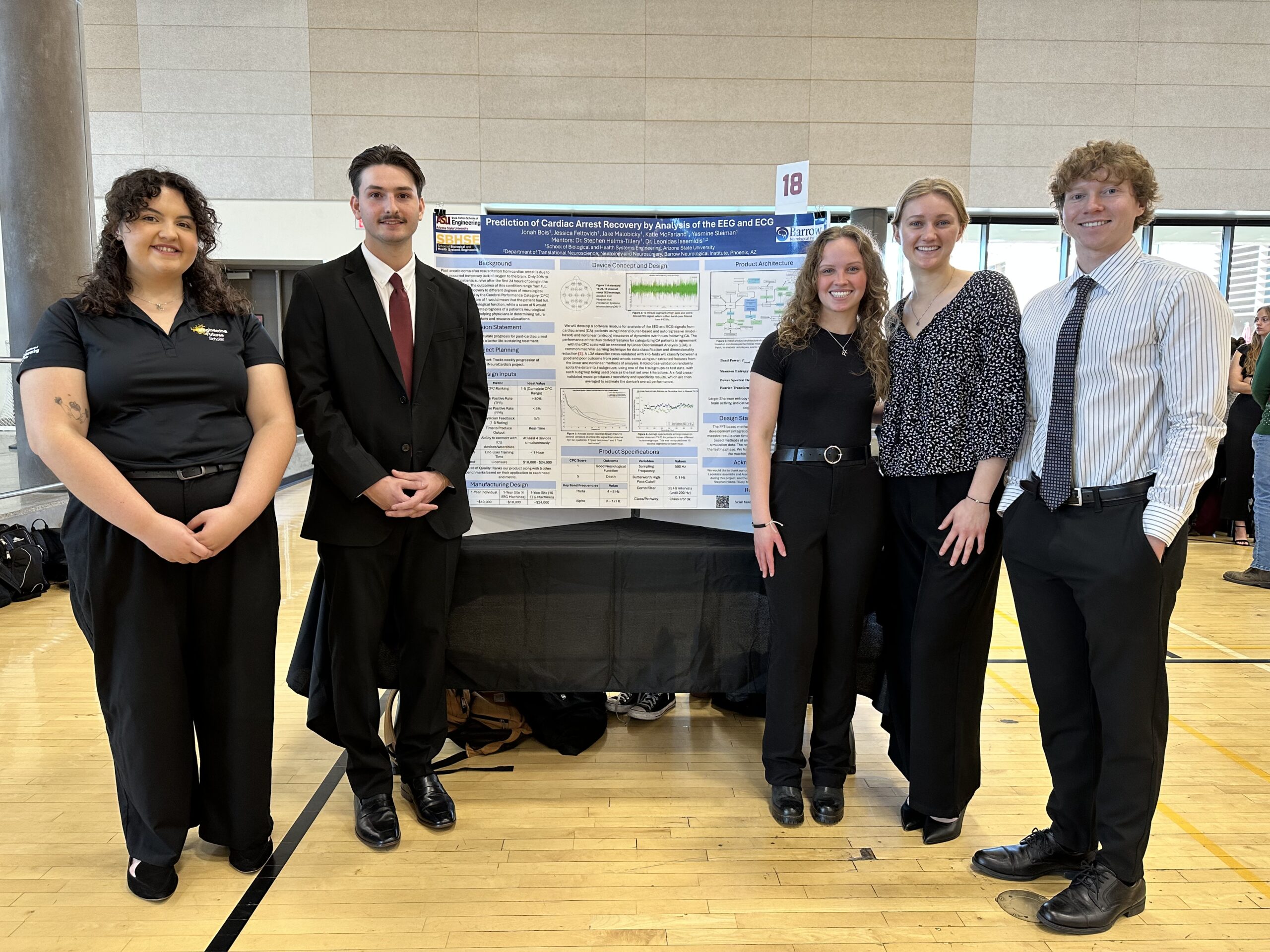
Prediction of Recovery from Cardiac Arrest by Analysis of the EEG and ECG
Biomedical Engineering
Jonah Bois, Jessica Feltovich, Jake Malobicky, Katie McFarland, and Yasmine Sleiman
Abstract
Post-anoxic coma happens after a patient suffers from a cardiac arrest event due to lack of oxygen to the individual’s brain. Outcomes of this condition range from full cognitive recovery to different levels of cognitive disability, and in some cases death. These patients are put into the ICU where the patient is constantly observed and a treatment plan is devised. While there is currently no method that predicts a patient’s neurological outcome, our team believes that the development of an algorithm that uses both EEG and ECG data could aid in determining a patient’s prognosis and predict their cognitive outcome. This concept would significantly improve physicians and lab technicians abilities to aid the patient, as this software would accurately predict the outcome of patients suffering from post-anoxic coma. This concept is derived from the need of physicians to have a fast and reliable, real time monitoring system that assists in determining patient outcomes, so physicians can decide how to allocate resources and treatments to patients. Due to the fact that this software would use both EEG and ECG data, it would fall under both cardiovascular and neurological market segments. The software will use two different types of filters to ensure there is as little noise as possible affecting the signals. The first one is a high pass butterworth filter with a cutoff frequency of 0.1 Hz, and a comb filter at 25 Hz and 200 Hz. It will also utilize the FieldTrip toolbox. The cost breakdown of our specific software is expected to be in terms of licensures. An annual individual license will be around $10,000, while an annual on-site license that includes various numbers of EEG machines will range between $18,000 and $24,000.
Video
Research poster
Health
